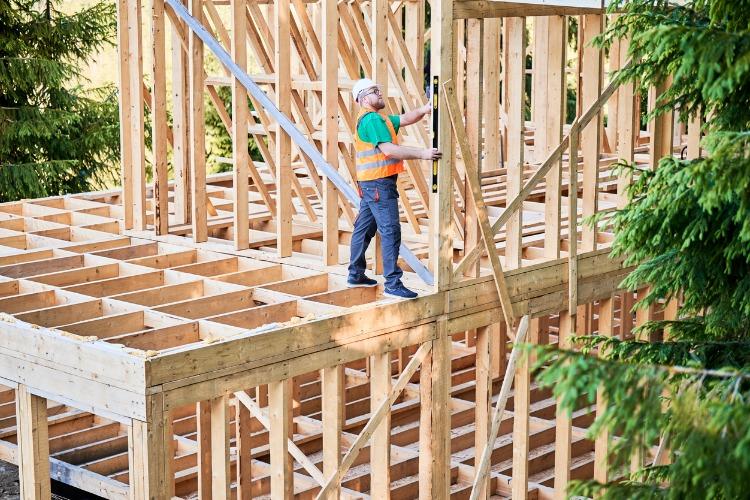Why Are Businesses Choosing a Commercial Timber Frame Builder for Sustainable Construction?
Timber-frame construction has become the preferred choice for commercial developers and builders. Nine out of ten builders across the US are incorporating timber-frame construction. An experienced commercial timber-frame builder embraces the sustainability and ability to create truly unique spaces for modern businesses. Businesses establishing new offices and commercial spaces understand the benefits of timber frame structures like energy efficiency, durability, customization, and of course, the visual impact.
Saves Money Through Faster Construction
In the construction sector, time is critical, and the cost of the building depends on it. Timber-frame is a great resource for commercial building developers. Stone and brickwork construction follows a stipulated path, often constant and without scopes for changes. On the other hand, timber-frame renders more convenience and flexibility in the construction process. The approach guarantees less construction time, which is cost-saving.
Conventional commercial developers and builders apply cost-saving tactics with labor, preliminary costs, and raw materials but ignore the financial benefits of completing construction sooner. Completing the project sooner means builders and developers spend less on on-site and initial expenses. Further, they can sell their units quickly, improving their cash flow.
Builds Top-Quality Homes
Every contemporary commercial timber frame builder has recognized the quality of construction of this method or approach. For example, timber-frame construction and manufacturing are accurate, guaranteeing precision and making it easier for builders and developers, unlike the masonry building process. Further, timber-frame construction embraces streamlined and smoother processes.
The risk of manual errors is nil in the construction process because manufacturing the structural kit is practiced within a disciplined factory condition. It indicates accuracy through state-of-the-art machinery and software. Commercial developers and builders manufacture structural kits that seamlessly fit on-site, ensuring top-notch building. Such a level of top-quality and accuracy caters to the needs of the businesses and exceeds the industry standards. Further, builders and developers create a niche in the industry.
Offers Eco-Friendly and Energy-Efficient Spaces
Another highlight of timber-frame construction is that they are sustainable and renewable with unparalleled energy efficiency attributes. It indicates that commercial builders and developers consciously choose sustainability and transcend toward a net zero future. The eco-friendly cladding options complement the energy-efficient spaces and offer excellent flexibility to create environmentally friendly and renewable business spaces.
Unlike conventional building approaches and methods that depend on raw materials extracted from sand, cement, concrete, and aggregate, timber-frame buildings need timber for construction. The best part is that timber frames are prefabricated, contributing to less noise pollution, waste, carbon dioxide emissions, and less traffic congestion during construction. Every modern commercial timber frame builder recognizes the positive impact of the construction approach on the environment.
Guaranteeing Regulatory Compliance
In the current era, builders and developers focus more on sustainability and energy efficiency to adhere to regulatory compliance. Commercial builders and developers have reassessed their buildings and methods to maintain regulatory compliance and switched to timber-frame construction. With timber-frame construction, commercial builders and developers enjoy the flexibility to create high-standard buildings and stay up-to-date with building codes and regulations.
Unlike conventional masonry, timber-frame commercial spaces offer flexibility to cater to US building regulations and codes. The regulation compliance covers lighting design, heating efficiency, and insulation to eliminate carbon emissions and encourage energy efficiency. Timber-frame construction doesn’t need traditional thick wall pockets for insulation. Further, it supports different bolt-on technological advancements like heat pumps and photovoltaics for enhancing energy efficiency.
Considerations for Timber-Frame Construction
Fire Safety
Incorporating fire safety is a priority in timber-frame buildings. It involves installing fire-rated coatings and barriers, maintaining fire separation distances, and using fire-safety materials. Timber-frame builders and developers embrace fire safety during construction and on completion.
Moisture Management
Commercial builders and developers should include ventilation, moisture-resistant barriers, and proper detailing to minimize the risks of moisture-related problems like rot or mold.
Acoustic Functioning
Builders and developers attain the expected sound insulation through timber-frame construction. The process includes using raw acoustic insulation materials and specific sound control designs between units and rooms.
Conclusion
With changing building codes and regulations, every commercial timber frame builder keeps itself up-to-date on any changes and modifications with building compliance requirements. By adhering to compliance regulations, developers and builders can avoid unnecessary penalties and practice sustainable commercial construction.

